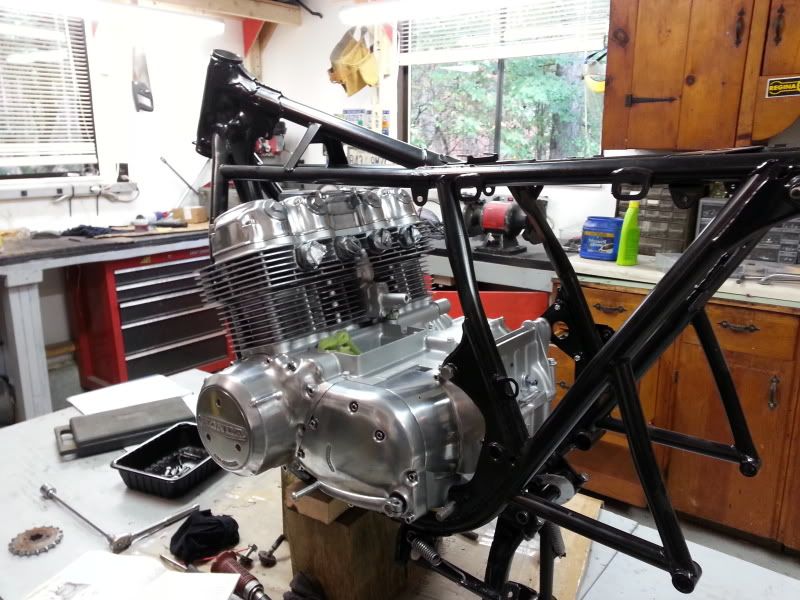Some say it’s pretty cheesy to paint an engine whole. Well… It still has good compression, so why take it apart? It just looked like crap.
I have had limited luck painting engines. Like everyone says, it’s all about the prep work. So here I go again.
First I did several passes with degreaser, scrubbing with a long bristle brush, and shooting it with a power washer. Then I did a couple of passes with paint remover and power washing. Scrubbed it again with a long bristle wire brush. Did a bit of sanding to clean up some aluminum oxidization spots, the real visible areas and where I could reach. Blew it off with compressed air. Then wiped it down with acetone. Oh yeah, for all the aluminum covers that will get polished, I took them off and cleaned up the gasket surfaces, then put them back on. The point here is so that I don’t end up scratching my new paint trying to remove old gaskets. After the acetone, I only touched the engine with rubber gloves on. I masked it off, shot it with VHT Engine Enamel , and let it dry for a day. I read a few reviews on different engine paints. Duplicolor got OK reviews, VHT and POR15 got better. VHT was available at the local auto parts store, plus lots of people on this forum said it matched the original Honda case color.

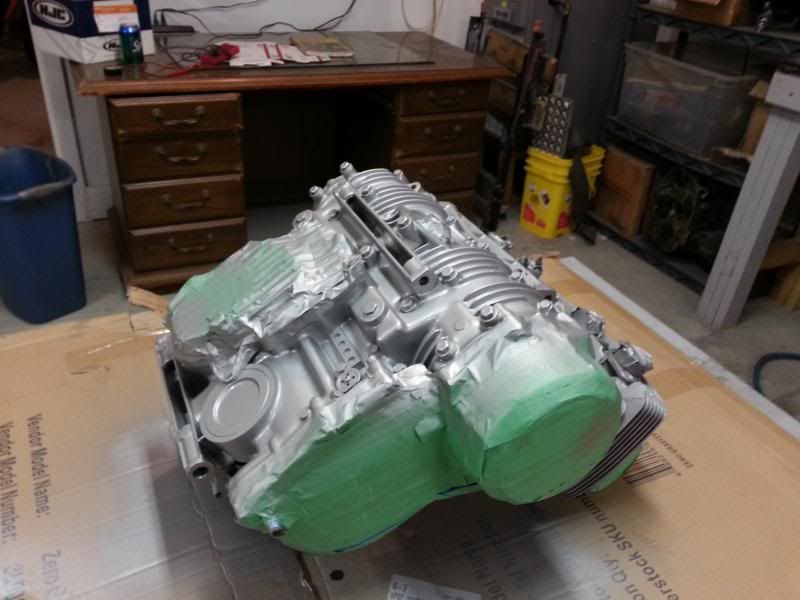
Now for the tricky part, how to cure it properly (200 degrees for 1 hour). Sure if I had the engine apart, I could cure it in the kitchen oven (while the wife was out… ha ha), but a big inline 4 is not going to fit. So I made my own curing box. I kept the big box from the BBQ we bought this summer, lined it with aluminum foil so it would reflect the heat. Yeah I used Duct Tape, not real heat tape, hoping it could stay together at 200 degrees.

Cut a hole in one bottom corner for my Heat gun, poked a cooking thermometer in the opposite top corner.
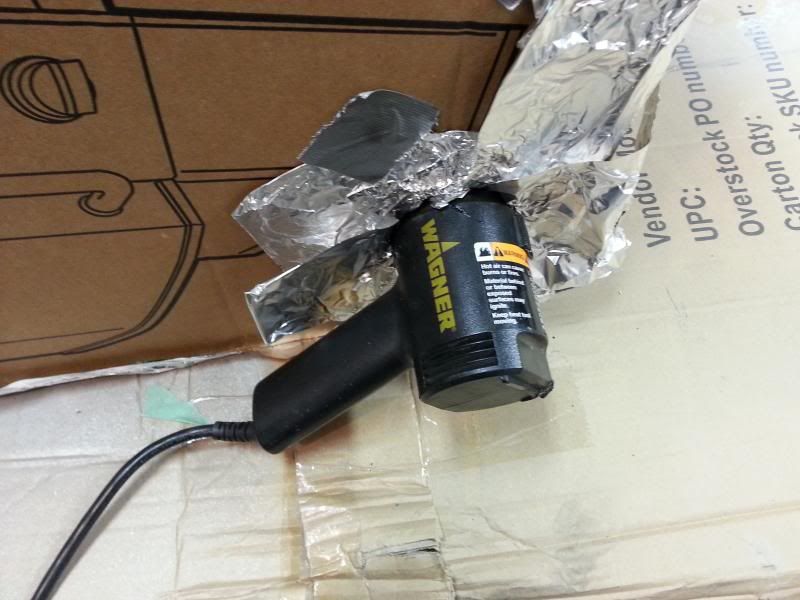

As you can see, I’m starting out at 63 degrees. There’s also a hole on top so I can regulate the heat by covering it, and so I can see inside. Making sure the heat gun isn’t pointing right at any part of the engine, and I’m not touching the inside of the box. Turned the heat gun on low and watched the temperature climb.

After about a half hour or so it seemed to top out at 130 degrees. So I kicked it up to high and laid some towels around the bottom edges. The temperature steadily climbed up to 195, now we are cooking! Since my first half hour was only at 130, I let it cook for another 45 minutes or so.
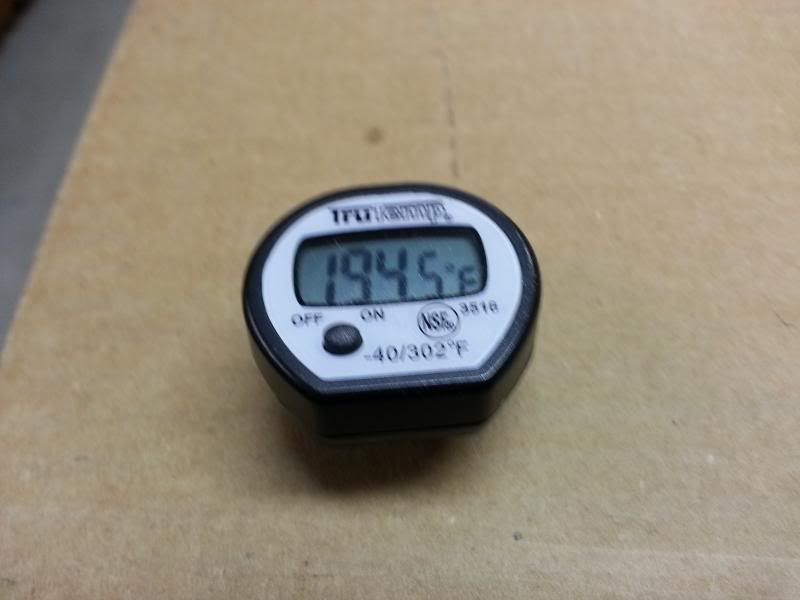
At some points it got up to 205 and I would open the hole a little. After cooling off an hour or so, the engine was still pretty warm. I did a fingernail test and that paint is as hard as a rock now..
I did baby sit the process closely. Cardboard combusts at 450 degrees

Now for the top half

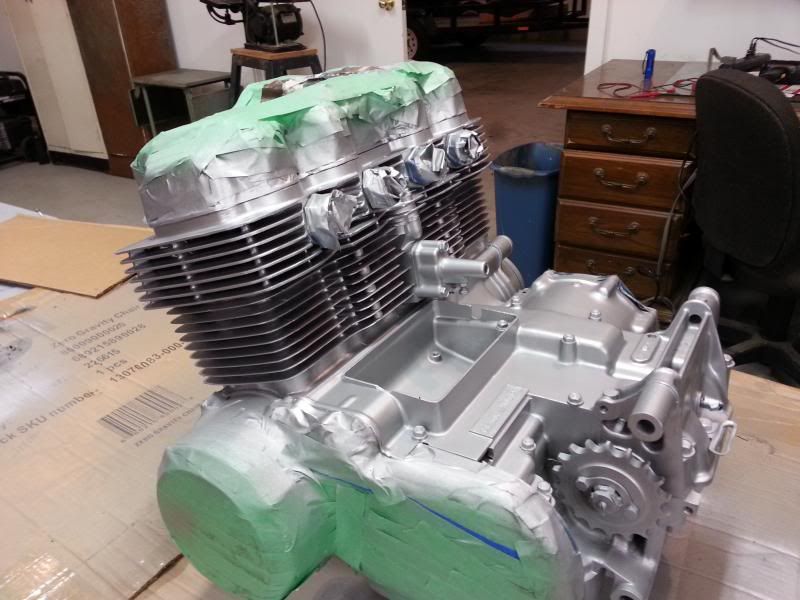
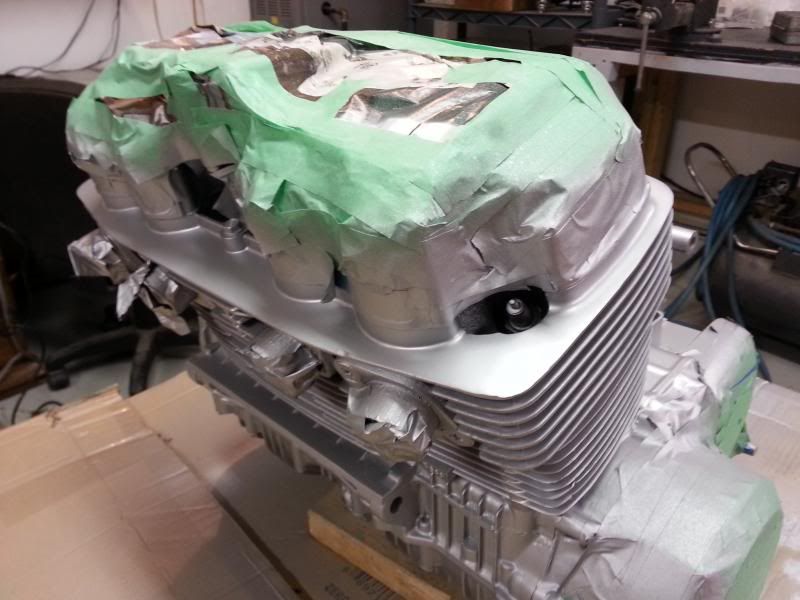
BTW: Yes I know I painted the front sprocket, it's getting replaced anyways.
Looking great!
